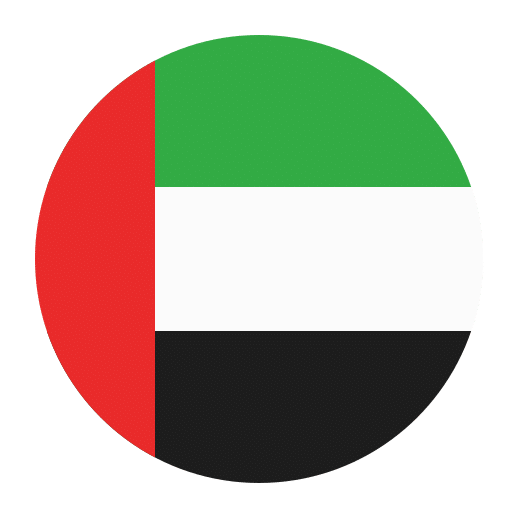When it comes to learning a new language, understanding the culture is just as important as mastering the grammar and vocabulary. For Arabic learners, one fascinating aspect of the culture to explore is its rich array of celebrations and holidays. These occasions provide not only a glimpse into the traditions and values of Arabic-speaking communities but also an excellent opportunity to practice the language in context. In this article, we will delve into some of the most significant celebrations and holidays in the Arab world, giving you cultural insights and useful vocabulary to enhance your language learning journey.
Eid al-Fitr
One of the most important holidays in the Islamic calendar is Eid al-Fitr, also known as the “Festival of Breaking the Fast.” This celebration marks the end of Ramadan, the holy month of fasting. Eid al-Fitr is observed by Muslims worldwide, including those in Arabic-speaking countries.
The celebrations begin with a special prayer called Salat al-Eid, performed in congregation at mosques or open fields. Following the prayer, it is customary to give Zakat al-Fitr (charity given to the poor) before indulging in a festive meal. Families gather to enjoy traditional dishes such as Ma’amoul (date-filled cookies) and Kunafa (a sweet cheese pastry).
Eid al-Fitr is also a time for socializing and gift-giving. Children often receive Eidiya (money or gifts), and people visit friends and relatives to exchange greetings and good wishes. The common greeting during this holiday is Eid Mubarak, which means “Blessed Eid.”
Eid al-Adha
Another major Islamic holiday is Eid al-Adha, the “Festival of Sacrifice.” It commemorates the willingness of the Prophet Ibrahim (Abraham) to sacrifice his son as an act of obedience to God. This holiday coincides with the annual pilgrimage to Mecca known as the Hajj.
Eid al-Adha begins with a special prayer, similar to Eid al-Fitr. One of the central rituals of this holiday is the Qurbani (sacrifice) of an animal, usually a sheep, goat, or cow. The meat from the sacrifice is divided into three parts: one third for the family, one third for friends and relatives, and one third for the needy.
This holiday is also marked by communal prayers, festive meals, and social gatherings. The greeting for Eid al-Adha is also Eid Mubarak, and it is a time for reflecting on faith, charity, and community.
Ramadan
While not a holiday in itself, the month of Ramadan is a significant period of fasting, prayer, and reflection for Muslims. During this month, Muslims fast from dawn until sunset, refraining from eating, drinking, smoking, and other physical needs. The fast is broken with a meal called Iftar, which traditionally begins with the eating of dates and drinking of water, followed by a larger meal.
Ramadan is also a time for increased spiritual activities, such as reading the Quran, performing additional prayers called Taraweeh, and engaging in acts of charity. The pre-dawn meal before the fast begins is known as Suhur.
The end of Ramadan is celebrated with Eid al-Fitr, making it a month of both spiritual rigor and joyful celebration.
Islamic New Year (Hijri New Year)
The Islamic New Year, or Hijri New Year, marks the beginning of the Islamic lunar calendar. It commemorates the Hijra, the migration of the Prophet Muhammad and his followers from Mecca to Medina. This event is considered a turning point in Islamic history and the start of the Islamic era.
The first day of the Islamic New Year is observed with prayers, recitations of the Quran, and reflections on the significance of the Hijra. While it is a more subdued occasion compared to Eid celebrations, it is nonetheless an important day for Muslims to reflect on their faith and the passage of time.
Mawlid al-Nabi
Mawlid al-Nabi is the celebration of the birth of the Prophet Muhammad. This holiday is observed on the 12th day of Rabi’ al-Awwal, the third month of the Islamic calendar. The ways in which Mawlid al-Nabi is celebrated can vary widely among different cultures and communities.
Common practices include recitations of poetry and songs in praise of the Prophet, religious lectures, and communal meals. In some regions, processions and street decorations are also part of the festivities. The focus of Mawlid al-Nabi is on remembering the life and teachings of the Prophet Muhammad and expressing love and reverence for him.
Laylat al-Qadr
Laylat al-Qadr, also known as the “Night of Decree” or “Night of Power,” is considered the holiest night in the Islamic calendar. It commemorates the night when the first verses of the Quran were revealed to the Prophet Muhammad. Laylat al-Qadr falls within the last ten days of Ramadan, and its exact date is believed to be one of the odd-numbered nights.
Muslims observe this night with intense prayer, recitation of the Quran, and seeking forgiveness and blessings from God. It is believed that prayers and good deeds performed on Laylat al-Qadr are especially powerful and rewarding.
Islamic Practices and Vocabulary
For language learners, understanding the vocabulary associated with these celebrations is crucial. Here are some key terms and phrases:
– **Eid Mubarak**: Blessed Eid
– **Salat al-Eid**: Eid prayer
– **Zakat al-Fitr**: Charity given at the end of Ramadan
– **Eidiya**: Gifts or money given to children during Eid
– **Qurbani**: Sacrifice of an animal during Eid al-Adha
– **Iftar**: Meal to break the fast during Ramadan
– **Suhur**: Pre-dawn meal before fasting begins
– **Taraweeh**: Additional prayers performed during Ramadan
– **Hijra**: Migration of the Prophet Muhammad from Mecca to Medina
– **Mawlid al-Nabi**: Celebration of the Prophet Muhammad’s birth
– **Laylat al-Qadr**: Night of Decree or Night of Power
National Holidays in Arabic-Speaking Countries
In addition to religious holidays, Arabic-speaking countries also observe various national holidays that reflect their unique histories and cultures. Here are a few examples:
Independence Day
Many Arabic-speaking countries celebrate their independence from colonial rule with national holidays. For instance, Egypt’s Independence Day is celebrated on July 23rd, marking the anniversary of the 1952 Revolution that led to the end of the monarchy and the establishment of the republic. Similarly, Tunisia celebrates its Independence Day on March 20th, commemorating its liberation from French colonial rule in 1956.
These holidays are marked by patriotic displays, parades, speeches, and cultural events. They provide an opportunity for citizens to reflect on their national identity and history.
National Day
Some countries have a National Day that celebrates the founding of the nation or the establishment of a significant political milestone. For example, Saudi Arabia’s National Day, celebrated on September 23rd, marks the unification of the Kingdom of Saudi Arabia in 1932. The United Arab Emirates celebrates its National Day on December 2nd, commemorating the formation of the UAE in 1971.
National Day celebrations often include fireworks, concerts, traditional dances, and other cultural performances. They are a time for national pride and unity.
Revolution Day
Revolution Day is another important type of national holiday in some Arabic-speaking countries. For example, Libya celebrates Revolution Day on February 17th, marking the start of the 2011 revolution that led to the overthrow of Muammar Gaddafi’s regime. Similarly, Algeria’s Revolution Day, celebrated on November 1st, commemorates the start of the Algerian War of Independence against French colonial rule in 1954.
These holidays are often marked by ceremonies, speeches, and cultural events that honor the sacrifices made during the struggle for freedom and independence.
Cultural Celebrations
In addition to religious and national holidays, Arabic-speaking countries also have various cultural celebrations that highlight their rich heritage and traditions.
Nowruz
While not specific to Arabic-speaking countries, Nowruz is celebrated by some Arab communities, particularly in Iraq and Lebanon. Nowruz, which means “New Day,” is the Persian New Year and marks the beginning of spring. It is celebrated on the vernal equinox, around March 21st.
Nowruz celebrations include various rituals and customs, such as cleaning homes, setting up a Haft-Seen table with symbolic items, and enjoying festive meals with family and friends. It is a time for renewal, joy, and cultural pride.
International Festivals
Many Arabic-speaking countries host international festivals that celebrate various aspects of culture, art, and heritage. For example, the Dubai Shopping Festival, held annually in the United Arab Emirates, is a month-long event that features shopping, entertainment, and cultural activities. The Cairo International Film Festival in Egypt is another prominent event that showcases films from around the world and promotes cultural exchange.
These festivals provide a platform for artists, performers, and visitors to engage with diverse cultural expressions and foster a sense of global community.
Conclusion
Understanding the celebrations and holidays in Arabic-speaking cultures is an essential part of learning the Arabic language. These occasions offer valuable insights into the traditions, values, and social dynamics of Arabic-speaking communities. Whether it’s the joyous festivities of Eid al-Fitr, the solemn reflections of Laylat al-Qadr, or the patriotic pride of Independence Day, each celebration provides a unique opportunity to practice and deepen your understanding of the Arabic language.
By familiarizing yourself with the vocabulary and customs associated with these holidays, you can enhance your language skills and connect more meaningfully with Arabic-speaking individuals. So, as you continue your language learning journey, take the time to explore and appreciate the rich tapestry of celebrations and holidays in the Arab world.

